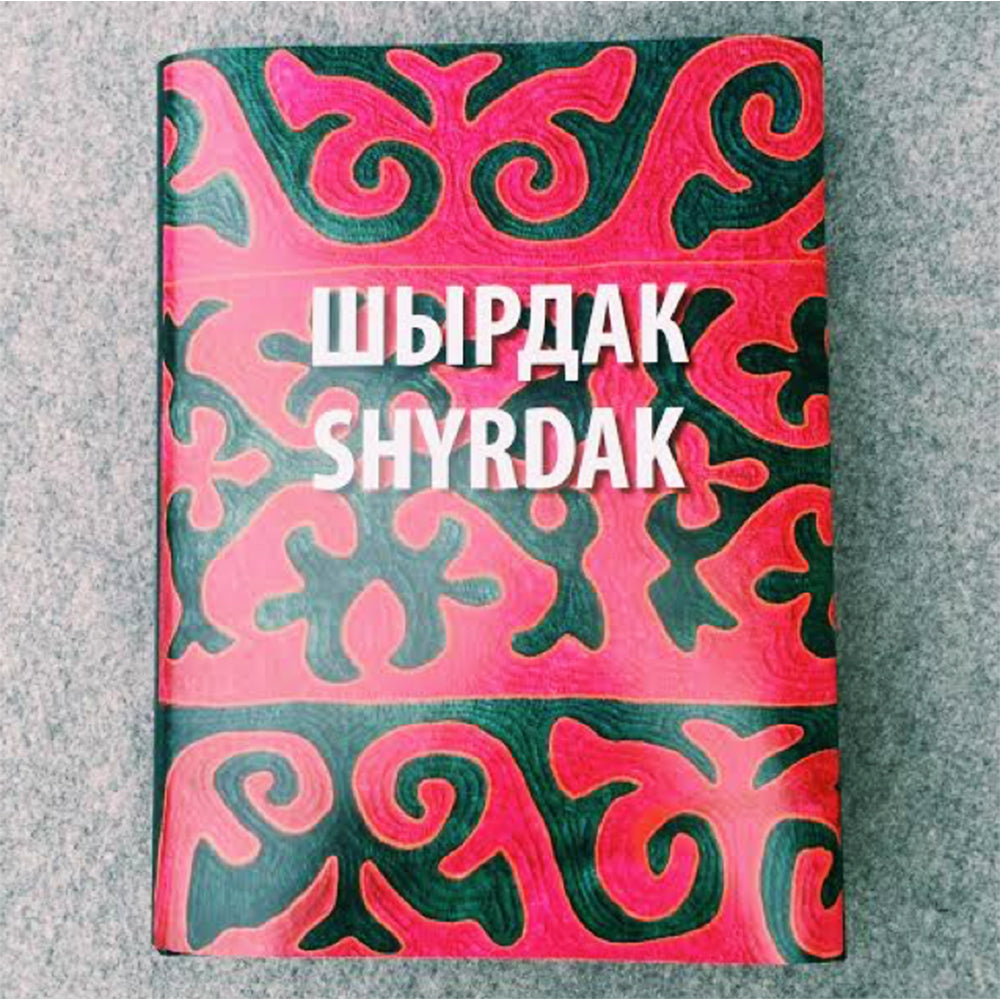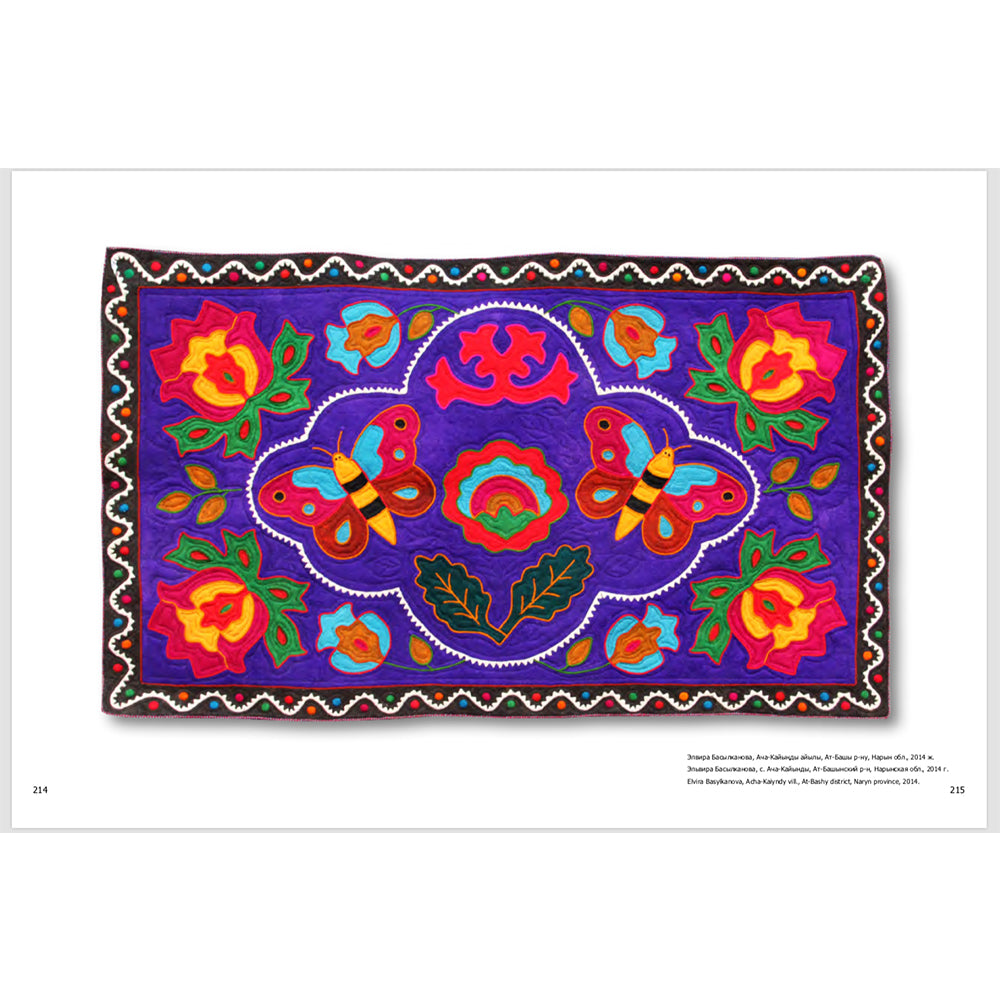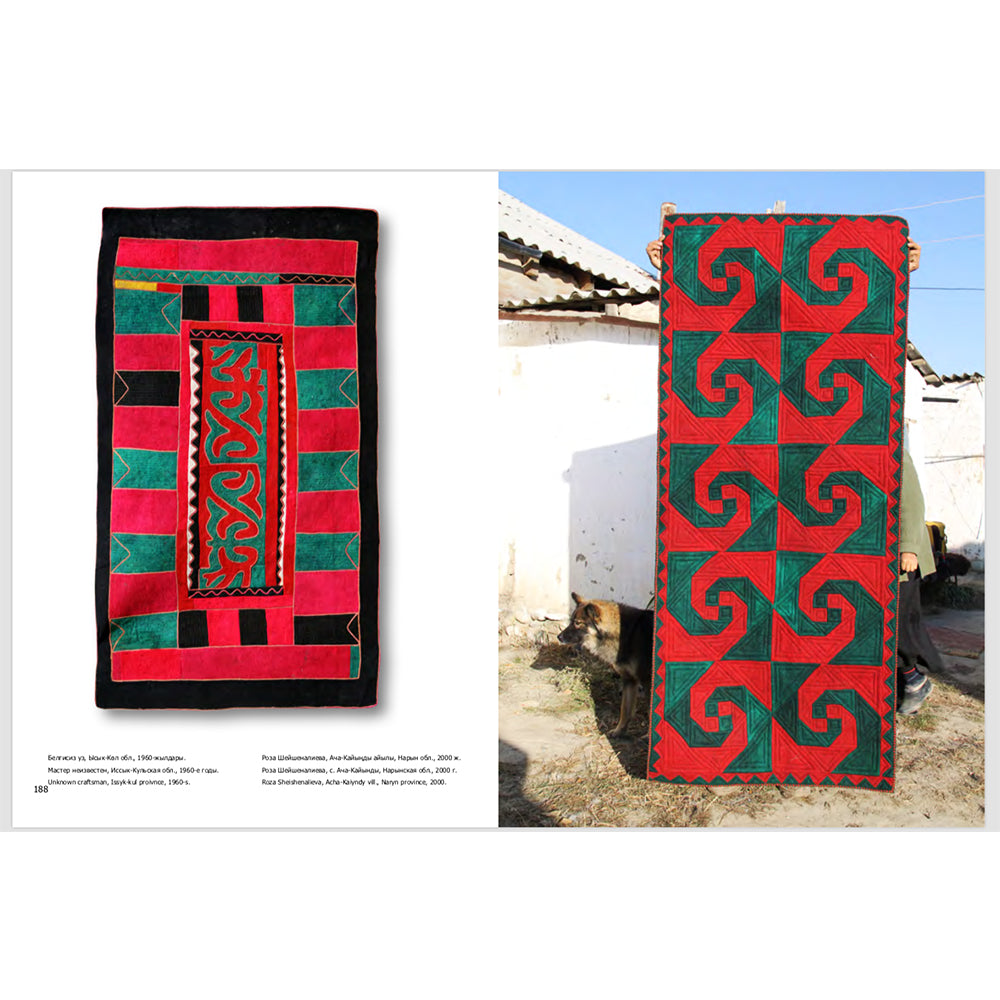Kyrgyzstan, Dinara Chochunbaeva, Central Asia Crafts Support Association's Resource Center, Felt Making
Selvedge Magazine
Couldn't load pickup availability
The Central Asian country of Kyrgyzstan has a rich craft tradition. This is no wonder, given the nation’s 2,000-year-old history and position at the crossroads of the ancient Silk Road trade route. Its mountainous and somewhat geographically isolated position has helped to preserve Kyrgyzstan’s cultural heritage, including a rich tradition of textile crafts.
As in many cultures, Kyrgyz women are the primary producers of traditional textiles. Kyrgyz textiles are often made from sheep’s wool and felt, although cotton, silk, and leather also feature frequently in Kyrgyz textiles. Although traditional patterns are often adapted to suit the tourist and export market, Kyrgyz textiles continue to feature heavily in local yurts and homes in the form of handmade carpets or felt rugs, which are known as shyrdaks.
The Central Asia Crafts Support Association’s Resource Center (or, their very helpful acronym CACSAR) is committed to supporting the cultural and craft heritage of Kyrgyzstan. Their mission is to continue the revival and development of crafts in the nation and the surrounding region of Central Asia, by encouraging a continued dialogue between artisans and craft centres from Central Asian cultures. They also seek to integrate Central Asian craftsmanship into the world market. The Centre values cultural identities and heterogeneity in a world where globalisation threatens the survival of unique and ancient traditions.
The valuable work of the CASCAR is funded by proceeds from training courses, craft fairs, the sale of products, and exhibitions. They also receive donations from individuals, organisations, and grants. Thanks in part to their work, the Kyrygz craft market is thriving and Kyrgyz children are aware of their proud cultural heritage, learning traditional arts in school and growing up with artisanal pieces displayed in homes, museums and galleries around the country.



Share


























